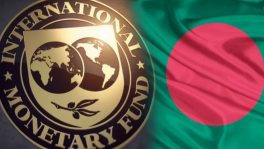Maoist challenge: Why large armies lose small wars
For a government with an image of ‘strong’ responses to provocation, the temptation to launch into a major retaliative operation would be strong. But that would be a mistake

Debates on the latest Maoist attacks, critiquing or defending security forces and their tactics, miss the strategic picture. As Henry Kissinger said – the conventional army loses, if it does not win. The guerrilla wins, if he does not lose.
To that extent, Maoists have been winning against security forces for over a decade now. A tactical playbook follows the trite cycle of post-mortem, rolling of heads, threats of a fitting response, usually followed by a massive reprisal. Ironically, the latter is exactly what guerrillas count on. A strategic view helps join the dots.
Mao Tse Tung, the ideological fountainhead of the movement, defined revolution as an act of violence by which one class (aka peasants) overthrows another class (landlords). In the Chinese context, the revolution was to overthrow the incumbent ruler. Ironically, Mao's strategy was influenced more by Clausewitz than Sun Tzu because of his Soviet leaning, training and patronage. In his book, On protracted War, (which borrows heavily from Clausewitz's On War), Mao identified three phases of the revolution — strategic defence, strategic stalemate and strategic offence.
The first phase is when the guerrillas are weak and the State is overwhelmingly strong. According to Mao, retreat, defeat and weakness is part of this period. Guerrillas seek to avoid contact and use this phase to build capability, garner local support, national and international alliances. When his weak and fledgling Red Army, the forerunner of the People's Liberation Army, was encircled by General Chiang Kai-shek's troops in their stronghold at Jiangxi, Mao retreated 9,000km, in what came to be known as the Long March, over a year, all the way to barren and inhospitable Yan'an to rebuild the Red Army's fighting capabilities. Much like the Maoist strongholds.
In the stalemate phase, guerrillas consolidate a physical enclave where their writ runs and State forces are unable to interfere. This gives them operating room to increase numbers and lethality of their cadres. The enclave, or as in the case of the Maoists, a "corridor", also allows them free movement and influx of external supplies from countries who are either sympathetic to their ideology or enemies of the State.
As the name implies, the stalemate phase consists of a series of undecisive skirmishes which largely benefits guerrillas. For one, home ground gives guerrillas the advantage of terrain, local support, choice of timing and location of engagement. Second, since security forces are usually overwhelmed, it gives guerrillas an additional cache of sophisticated arms, ammunition, communication equipment and other resources. And in some cases, also hostages, who can be a major bargaining chip.
Third, it boosts the morale of guerrilla cadres, especially when they have defeated crack and much vaunted government troops. The added benefit is creating legends and narratives around key guerrilla leaders and specific units – in this case, Madvi Hidma and the 1st Battalion of People's Liberation Guerrilla Army. And most importantly, a humiliating rout compels the state to react with a heavy hand and overwhelming force — most of which is borne by the constituent population, thus cementing their support for the guerrillas. It is in this phase that the Maoist movement is now at, and probably will remain for some time to come.

For a government with an image of 'strong' responses to provocation, the temptation to launch into a major retaliative operation, possibly with armed forces participation, would be strong. But that would be a mistake.
All terror operations are conducted for five audiences. The first is the incumbent government. The objective is to attack State instruments for psychological and political messaging, creating operating rooms and provoke disproportionate use of force especially on their second audience – the constituent population, thus alienating larger numbers from the State.
The third audience is the non-constituent population, which is the rest of the country, who are now aware of the seriousness of this problem and want to get involved. People with little understanding of warfare start baying for blood, compelling the government down a slippery slope of militarising the situation. Which in a perverse way, justifies the guerrilla's cause of fighting the State.
The fourth audience are internal cadres and potential recruits who swell because of the success of every operation and reprisals by State forces. The last audience are foreign countries who, at one extreme, will assist with moral and material support and, at the other, by internationalising the cause, reduce manoeuvring room for the State.
It would be naive to assume that an operation planned with such tactical finesse by Maoists would be devoid of strategic planning for its aftermath. Our armed forces and central armed police forces are stretched on an unprecedented level. We are facing a two-and-a-half-front war right now. While tensions may have abated on the eastern and western fronts, the commitment of troops continues. Troops are also committed in Kashmir, Northeast, in security duties for elections and of course battling the pandemic. Similarly, the mindshare of national strategic leadership is dominated by several pressing political and economic issues at the moment. Besides, brute force alone seldom exterminates guerrilla movements as nations with far larger armies have found to their great expense.
Our security forces suffered heavy casualties because their tactical leaders walked into a trap. The strategic leaders shouldn't walk into another one. And that calls for strategic restraint and manoeuvring, rather than hasty resolute action.
Raghu Raman is the founding CEO of NATGRID.
Disclaimer: This article first appeared on Hindustan Times, and is published by special syndication arrangement.


 Keep updated, follow The Business Standard's Google news channel
Keep updated, follow The Business Standard's Google news channel













